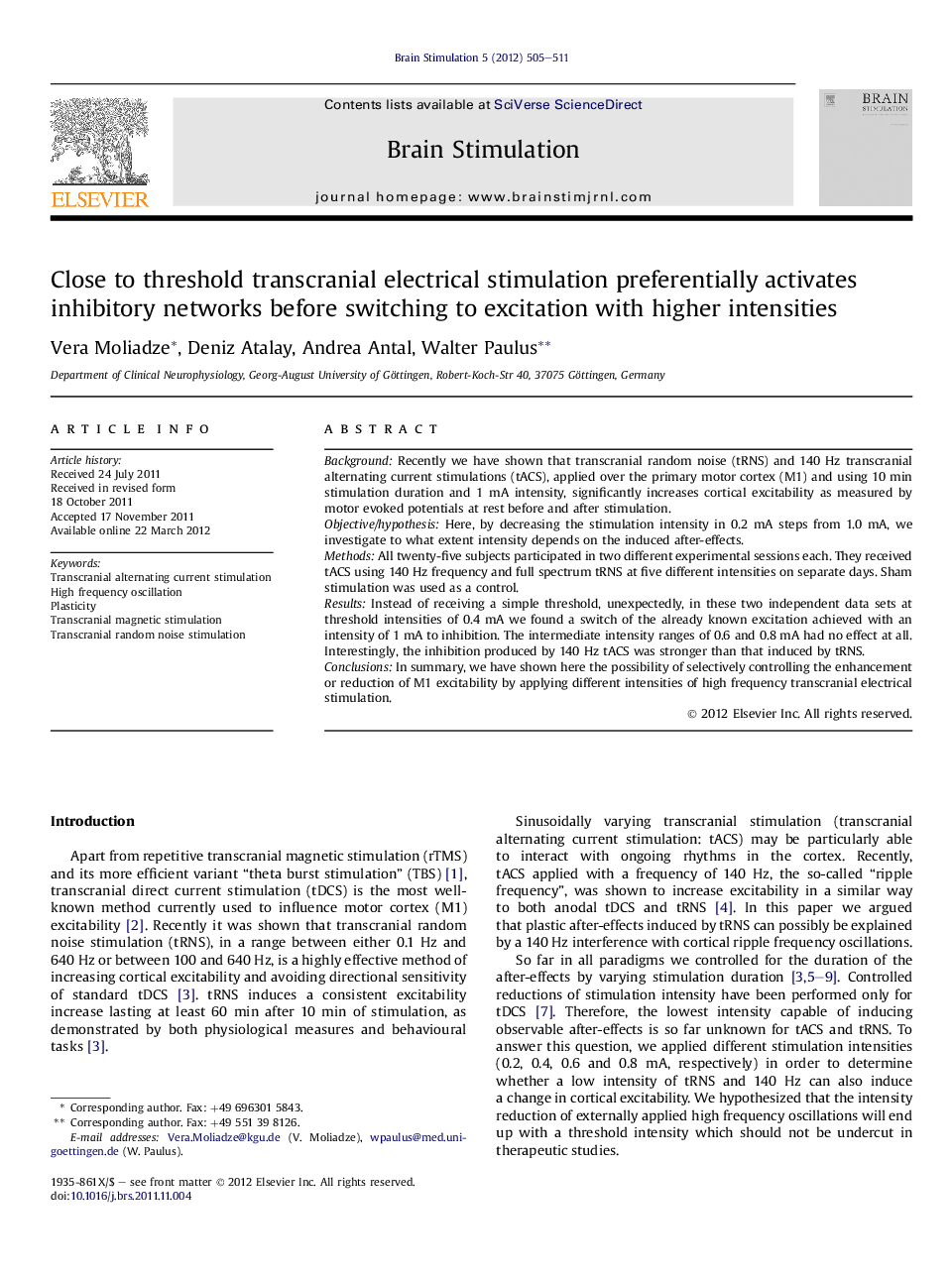| Article ID | Journal | Published Year | Pages | File Type |
|---|---|---|---|---|
| 3038874 | Brain Stimulation | 2012 | 7 Pages |
BackgroundRecently we have shown that transcranial random noise (tRNS) and 140 Hz transcranial alternating current stimulations (tACS), applied over the primary motor cortex (M1) and using 10 min stimulation duration and 1 mA intensity, significantly increases cortical excitability as measured by motor evoked potentials at rest before and after stimulation.Objective/hypothesisHere, by decreasing the stimulation intensity in 0.2 mA steps from 1.0 mA, we investigate to what extent intensity depends on the induced after-effects.MethodsAll twenty-five subjects participated in two different experimental sessions each. They received tACS using 140 Hz frequency and full spectrum tRNS at five different intensities on separate days. Sham stimulation was used as a control.ResultsInstead of receiving a simple threshold, unexpectedly, in these two independent data sets at threshold intensities of 0.4 mA we found a switch of the already known excitation achieved with an intensity of 1 mA to inhibition. The intermediate intensity ranges of 0.6 and 0.8 mA had no effect at all. Interestingly, the inhibition produced by 140 Hz tACS was stronger than that induced by tRNS.ConclusionsIn summary, we have shown here the possibility of selectively controlling the enhancement or reduction of M1 excitability by applying different intensities of high frequency transcranial electrical stimulation.
